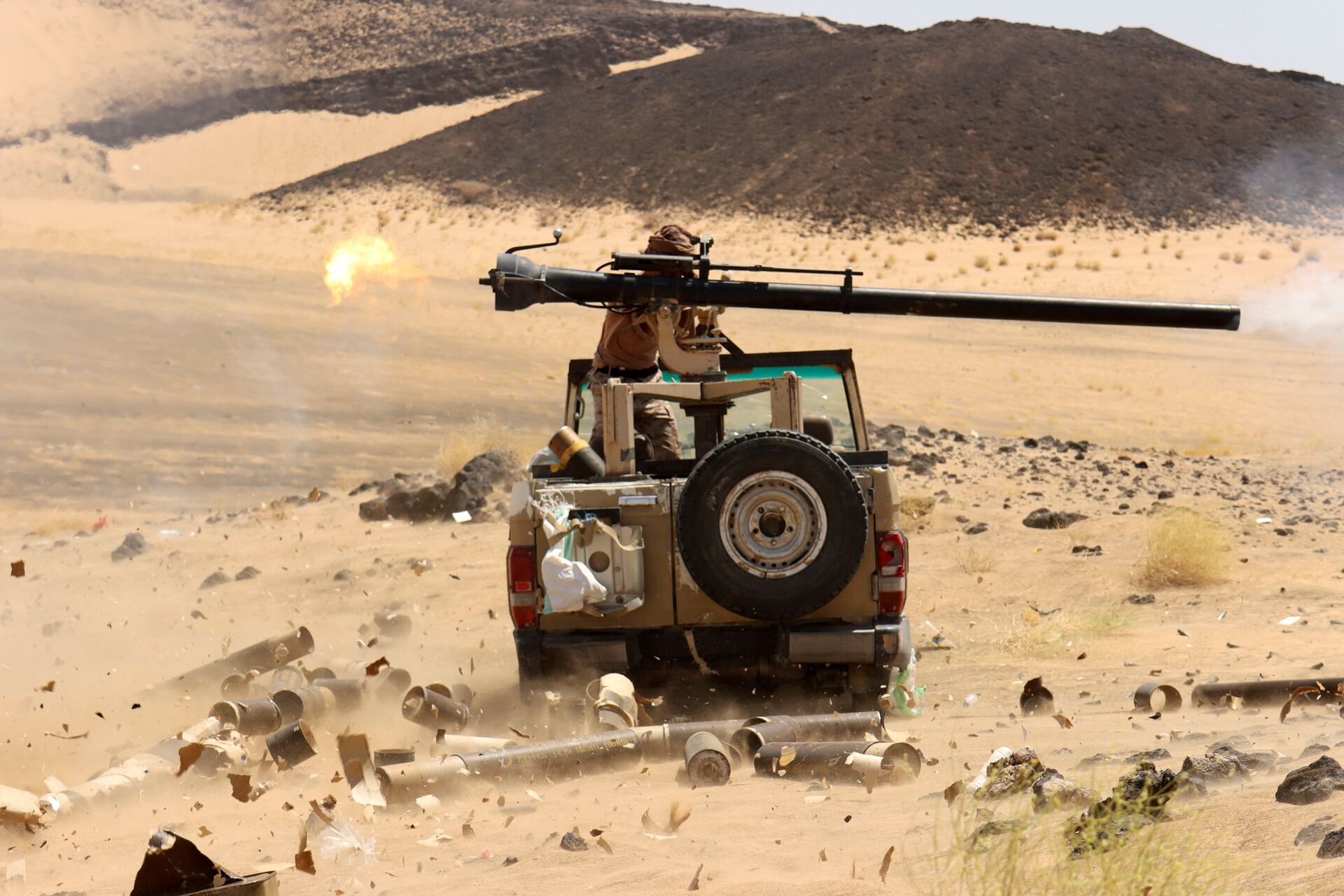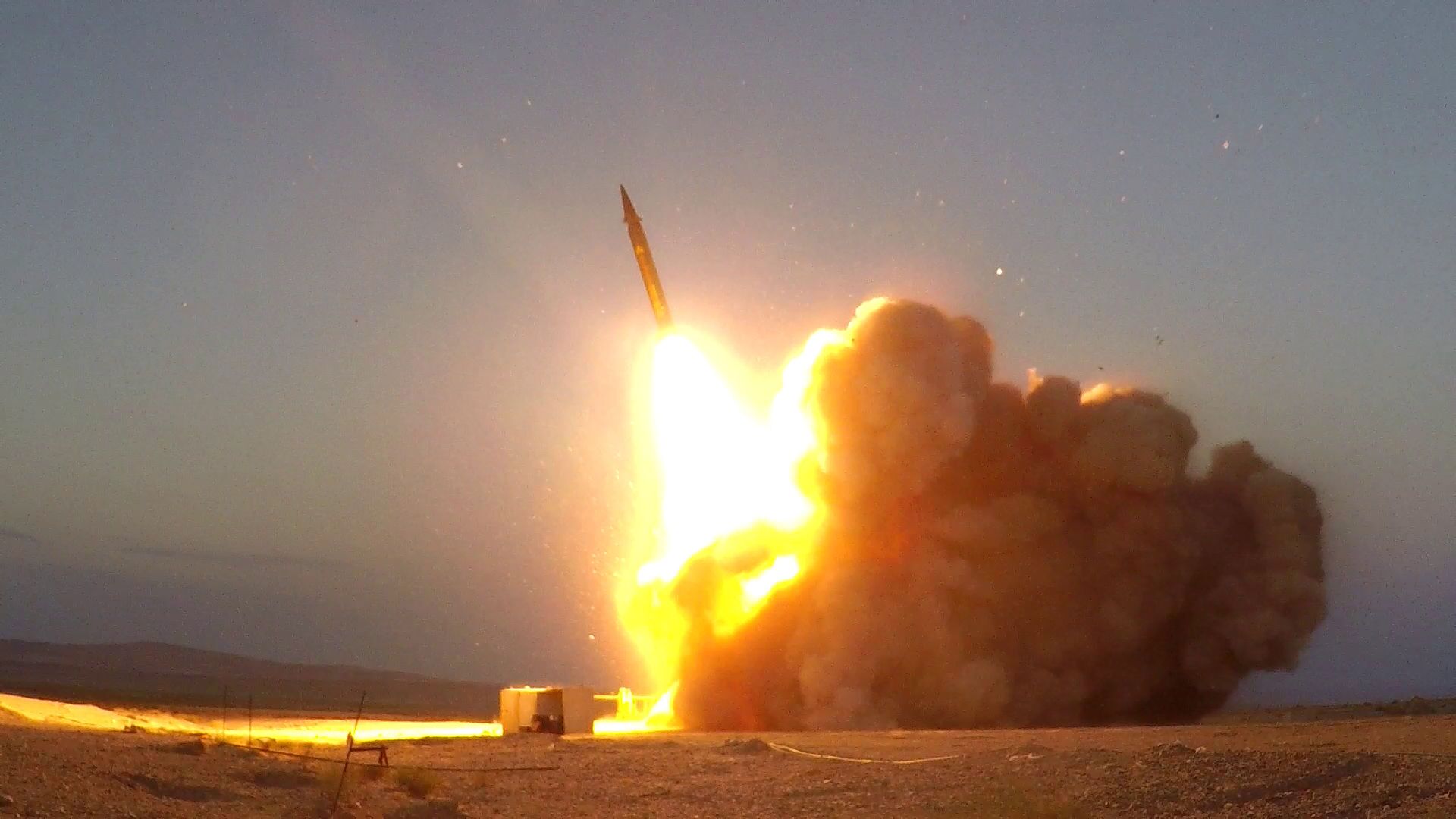Houthis Claim Ballistic Missile Attack on Jazan Command HQ Killed, Wounded 35 Saudi Troops
19:42 GMT 21.10.2021 (Updated: 11:35 GMT 10.12.2022)
Subscribe
A recent missile strike by Yemen’s Ansarallah, or Houthi movement, against a Saudi airport near the border is reported to have killed dozens of soldiers in a command headquarters. The strike came as the United Nations Security Council voted to condemn Houthi cross-border attacks, but not Saudi airstrikes in Yemen.
A Wednesday attack on al-Wajab military camp in the Saudi city of Jazan accurately struck its target, killing or wounding at least 35 Saudi officers and soldiers, including two pilots of Apache attack helicopters, according to a report by the Yemen Press Agency in Sana’a, which is controlled by the Houthis. The strike also reportedly destroyed weapons stores and Apache hangars.
According to the report, the camp was hit by five ballistic missiles, although the Saudi Defense Ministry on Wednesday claimed to have intercepted at least one missile targeting Jazan.
“This attack comes in response to the aggression, aerial bombardment, and its continued siege on Yemen,” Brig. Gen. Yahya Sarie, a spokesperson for the Houthi military forces, told YPA. “If the coalition continues its air escalation, our response will be painful and extensive.”
The Jazan strike comes days after another attack on King Abdullah Airport in Jazan on October 8 that injured at least 10.
The Saudi-led coalition in Yemen, which includes forces loyal to Yemeni President Abdrabbuh Mansour Hadi, has significantly escalated its air operations against the Houthis over the last few weeks as the Zaidi Shiite group continues its advance through Mar’ib and Shabwa Provinces, the last stronghold of Hadi’s government in the north.
"We carried out 32 strikes... in Abdiya over the past 24 hours," the coalition said on October 16, referring to the district at the southernmost time of Mar’ib Province, adding that "11 military vehicles were destroyed and more than 160 terrorist elements eliminated.”
By Thursday, the tenth consecutive day of Saudi airstrikes in Mar’ib, Houthi forces had suffered more than 1,300 casualties, according to the coalition.

A Yemeni government fighter fires a vehicle-mounted weapon at a frontline position during fighting against Houthi fighters in Marib, Yemen March 9, 2021
© REUTERS / ALI OWIDHA
Houthi spokesperson Mohammed Abdusalam was quoted by AFP as saying that their fighters were facing “elements linked to Al-Qaeda* and Daesh*” in southern Mar’ib, which were linked to the Saudi coalition. Sputnik has also previously reported on allegations of Daesh forces fighting on the coalition’s side in Mar’ib.
The ancient region, which is believed to have been home to the Biblical Queen of Sheba, is today rich in oil, with pipelines running across Houthi territory to the Red Sea coast. However, it is also the temporary home of some 2.2 million refugees, who fled to the region earlier in the war when it was far from the front line and are staying in 139 different refugee camps. The UN has warned that war in Mar’ib could further threaten those already displaced, making their precarious situation worse.
The United Nations Security Council on Wednesday condemned “Houthi cross-border attacks against Saudi Arabia” as well as the offensive in Mar’ib, and called for an immediate ceasefire. However, the statement made no mention of Saudi airstrikes.
Another UN agency, the UN Children’s Fund or UNICEF, reported on Tuesday that a “shameful milestone” had been reached, with more than 10,000 children wounded by the conflict, which has raged since March 2015.
"Yemen’s humanitarian crisis – the world’s worst - represents a tragic convergence of four threats: (1) A violent and protracted conflict, (2) economic devastation, (3) shattered services for every support system - that is, health, nutrition, water and sanitation, protection and education, (4) & a critically under-funded UN response,” UNICEF spokesperson James Elder told reporters in Geneva.
The most recent estimates from the UN on deaths in the Yemen war, which date to December 2020, are that more than 233,000 have been killed, including 131,000 from indirect causes such as hunger, disease, and lack of access to medicine.
The war began in March 2015, when the Houthi movement rebelled against planned austerity measures and a federalization plan pitched by Hadi. After they captured Sana’a, Hadi fled to Saudi Arabia, which formed an anti-Houthi coalition that included Hadi’s government, as well as the United Arab Emirates, Morocco, Sudan, and the United States.
While the coalition enjoyed air supremacy in the war’s early years and waged a relentless bombing campaign, the Houthis have mounted increasingly daring attacks into Saudi Arabia itself, targeting Saudi military facilities, oil infrastructure, and civilian targets. They have been accused of being Iranian proxies, but significant aid from Tehran has never been demonstrated.
*Terrorist groups banned in Russia and many other countries

